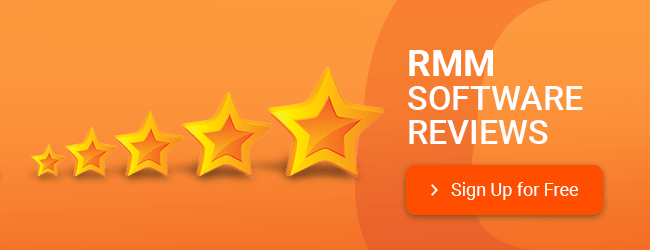If you are planning to delve into the world of MSP business, or if you are looking for a good Remote Monitoring and Management software to better manage your enterprise, then one of the factors you should use to evaluate RMM products is reviews.
A positive review of an RMM software can have a big influence on a person's decision. There are real reviews and fake reviews. Since reviews play a major role in most users' decision to purchase a product, it is important to be able to identify genuine reviews. Here's how to do just that.
There will be good and bad reviews about the same RMM software products. If a review sounds good then it is fine. But if it sounds too good to be true, then there's a good chance it is. You must try to read between the lines to spot fake reviews. If the review sounds overly promotional, there's a good chance it's fake.
Some pointers to spot fake reviews.
To make sure you get the most of reading RMM solution reviews, get to know all the features of the RMM solutions you're interested in. Read about the features of RMM software from a couple of popular vendors. Then, make a list of the features you would require in your ideal RMM software. Important: You must do all this without getting influenced by any of the reviews. If you can, then do a comparative study of the features offered by the different RMM software products. This is worth the effort, as it will help you identify the product that best suits your business requirements.
There is both paid and free RMM software. To decide which is right for you, you must study the pros and cons of both types of offerings.
A paid RMM software requires investment. For paid solutions, you have to analyze how the licenses are being charged – user-wise, or device-wise, etc. For a large enterprise this may require considerable investment. If you are an MSP, then the license structure must be viable for you to provide the services to your clients. The license fees must not bite a chunk of what you charge your clients. You must make a reasonable profit to continue staying in the business, or you will close shop shortly.
Analyse all the features offered by the paid RMM software. There may be features that you do not require (bloatware features), but would still be charged for. See if you can negotiate a package where you have to pay only for the features that you require. Watch out for the useless frills and don't pay for them. Another important factor is the hidden charges. The initial price displayed or quoted may only be for the basic features, which would not meet your requirements. A package with all your requirements may actually cost much more than the listed price. Software vendors sometimes pack plenty of punch in the fine print; so work out the actual charges that you will end up paying when you purchase licenses.
Remember as an MSP, you just can't survive with RMM alone. You also need a service desk and a patch management system to provide MSP service. And these must work in harmony with the RMM solution. Usually, integration is better when all these three products are from the same vendor.
Consider using a free RMM software. Examine the features they offer. Compare different offerings. Rate them. Find out if the RMM software is really free, or if there are hidden charges. Find out what the catch is. Free offerings are hard to come by, and good free products are hard to sustain. Check the compatibility of the free RMM software with patch management and service desk solutions. And if the same vendor is offering all the three products for free, then that's even the better. Integration between the solutions is ideal.
Free RMM software may limit you to a certain number of devices or users. Check out the charges beyond the free offering. If you provide services to many clients, then the licensing costs may be substantial. The core issues to watch out for with free RMM software are support and hidden charges.
Now that you have a good understanding of the RMM software product, about required associated products such as – patch management and service desk, and free and paid RMM softwares, and your own requirements, you are in a better position to read RMM software reviews. You will now be able to read between the lines.
When you know and understand your requirements for RMM software, you can gauge honest reviews. Remember that reviews are opinions. Each MSP administrator may face a different experience. Read the reviews carefully, judge the true reviews and form your own opinion.
Comodo RMM Software is a totally free software that is offered along with service desk and patch management solutions under the name of Comodo ONE. It is a well-integrated software that is completely free. Check out reviews of this product make an informed decision with the knowledge you've gained from reading this article.

Benefits of Having Remote Monitoring Tools to your enterprise
How MSPs are benefitted using Remote Monitoring (RMM)
CLOUD BASED IT MANAGEMENT SOFTWARE FOR
MSPs and ENTERPRISE
Remote Monitoring and Management | Service Desk | Patch Management
Now Add Up To 50 Devices for Free
Add new comment